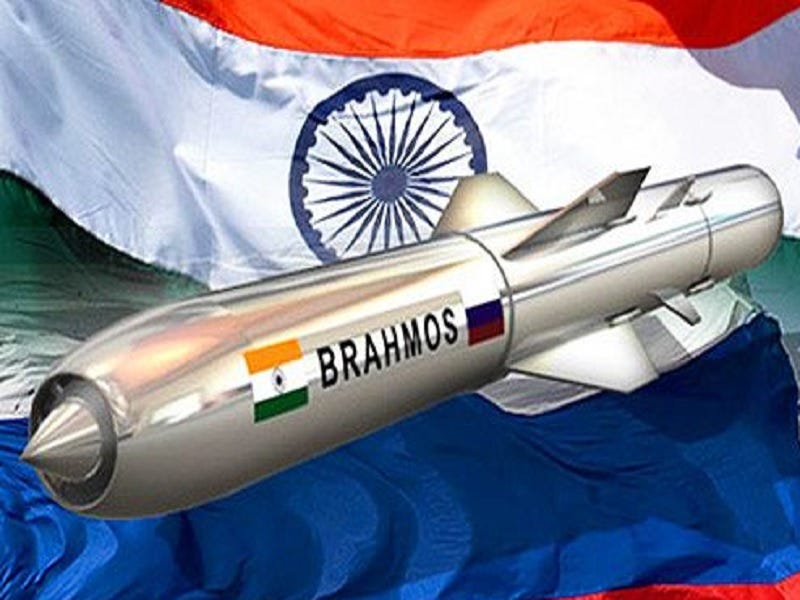India’s Impending BrahMos Deal With Indonesia Could Shift ASEAN’s Military-Strategic Dynamics
The primary Sino-American participants in the Asia-Pacific front of the New Cold War accept that India can play a pragmatic role in relieving perceived pressure from their rival on neutral ASEAN states like Indonesia to purchase their arms and thus tacitly take sides in those two’s competition. They each seem to have concluded that it’s better for India to meet related needs than their rival, which explains why neither has a problem with Russia’s partial role in this impending BrahMos deal.
Reuters reported on Wednesday that “India-Russia defence firm eyes $200 mln missile deal with Indonesia”, which cited BrahMos CEO Atul D. Rane who claimed that an agreement on the export of these supersonic weapons could be reached by the end of the year. Although the size of the negotiated deal pales in comparison with the over $1.5 billion that Japan will spend for purchasing 400 of the US’ subsonic Tomahawk cruise missiles, its significance rests in how it could shift military-strategic dynamics.
Indonesia is the largest member of ASEAN and serves as the core of that regional integration bloc so it’s symbolic that it’s seriously considering jointly produced Russo-Indo supersonic missiles for ensuring its national security interests instead of looking to China or the US. Those two are the primary participants in the Asia-Pacific front of the New Cold War between the first’s Sino-Russo Entente and the second’s Golden Billion over the direction of the global systemic transition.
The de facto Indian-led Global South of which Indonesia is a part has an interest in preemptively averting any exacerbation of their competition across the developing world, ergo the need to rely on a neutral third-party balancing force for pragmatically relieving related pressure upon them. In this context, India can perfectly play such a role via forthcoming BrahMos exports to Indonesia, which would help ensure the latter’s national security interests without inadvertently offending China or the US.
The first-mentioned accepts that ASEAN’s militarization is inevitable so it would prefer for its fellow Russo-Indo BRICS partners to help regional countries with this than for the Golden Billion to play a pernicious role in that respect. Likewise, while the second-mentioned would of course prefer for its own de facto New Cold War bloc to arm Indonesia and other ASEAN countries with cruise missiles, it’s willing to accept India doing so even in partial partnership with Russia than for China to play this role.
Simply put, the primary Sino-American participants in the Asia-Pacific front of the New Cold War accept that India can play a pragmatic role in relieving perceived pressure from their rival on neutral ASEAN states like Indonesia to purchase their arms and thus tacitly take sides in those two’s competition. They each seem to have concluded that it’s better for India to meet related needs than their rival, which explains why neither has a problem with Russia’s partial role in this impending BrahMos deal.
China trusts its fellow entente partner much more than it trusts India and thus feels comfortable that Moscow wouldn’t have approved continued talks if it sincerely felt that arming Indonesia with these wares would irresponsibly shift the military-strategic dynamics against Beijing. Likewise, the US trusts its fellow Quad partner incomparably more than it trusts Russia and thus feels comfortable that Delhi wouldn’t have continued talks if it felt that this deal would shift those dynamics against Washington.
To be sure, the regional military-strategic dynamics will indeed shift if this deal goes through, though not against either primary participant in the Asia-Pacific front of the New Cold War. Rather, they’d shift in the direction of relatively managing the increasingly intense Sino-American competition there by pragmatically providing a neutral third-party balancing alternative for relieving perceived pressure from either of those two on neutral ASEAN states to purchase their arms and thus tacitly take their side.
Despite being worth over seven times less than the subsonic Tomahawk deal that the US just clinched with Japan, the Russo-Indo BrahMos supersonic one with Indonesia could thus be just as regionally significant considering how much it could shift the military-strategic dynamics for a fraction of that cost. Military diplomacy, which refers to the export of arms and deployment of professionals (including ones from private companies) to achieve political goals, is therefore being practiced through this deal.
The latest report from the Stockholm International Peace Research Institute doesn’t include India on its list of the top 25 exporters since its annual sales are only around $1.5 billion, though this still represents a 334% jump over the past half-decade and Delhi wants to triple that to $5 billion in the next two years. Meanwhile, that same report claims that Russia’s share of global arms exports over the past half-decade dropped by nearly one-third, though these statistics don’t depict the full military-strategic picture.
As was explained with respect to how their impending BrahMos deal with Indonesia could significantly shift those dynamics in ASEAN, the success of military diplomacy can’t be accurately assessed with numbers alone. For instance, despite Russia’s arms exports dropping by almost one-third over the past half-decade, Moscow still managed to skillfully leverage its military diplomacy in Africa through creative means that resulted in the collapse of France’s “sphere of influence” there during that same time.
It's with these observations in mind regarding the impending implications of Indian-driven military diplomacy in ASEAN via its joint BrahMos venture with Russia as well as Moscow’s own practice thereof through separate means in Africa and related successes thus far that nobody should dismiss these two. While their numbers might not appear all that impressive, they more than make up for their lower quantity of exports through the qualitative way in which they shift regional dynamics.




